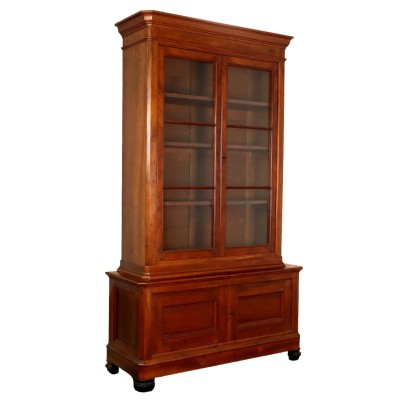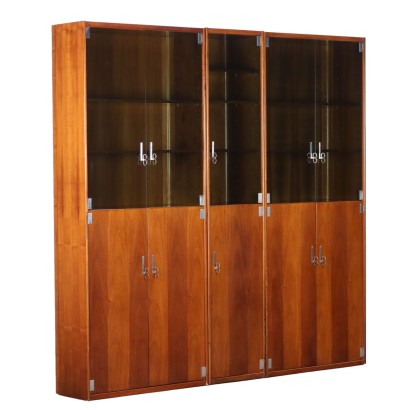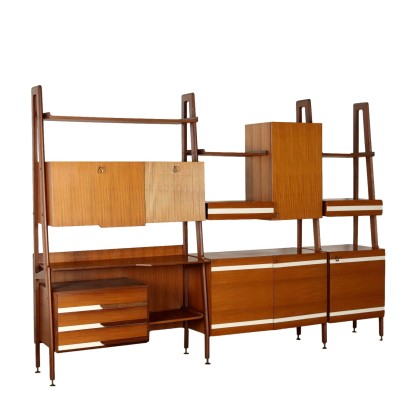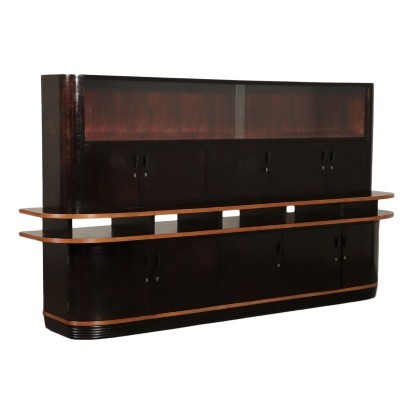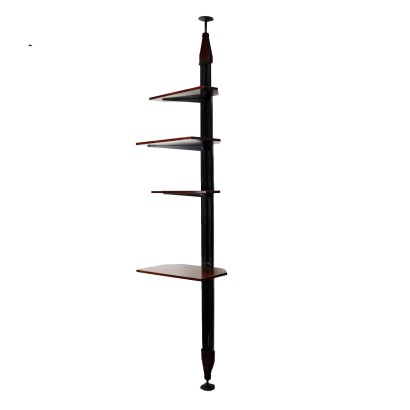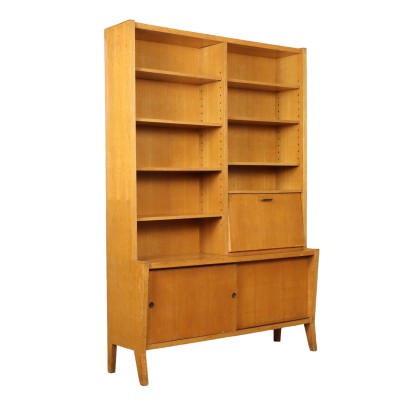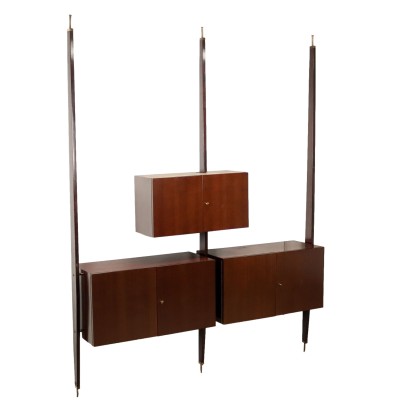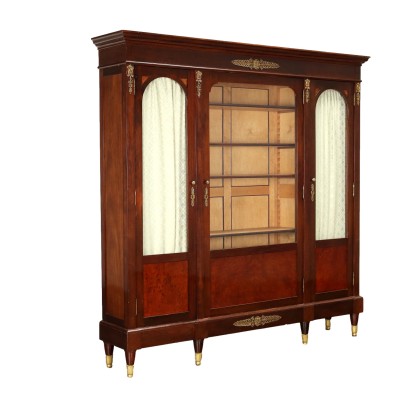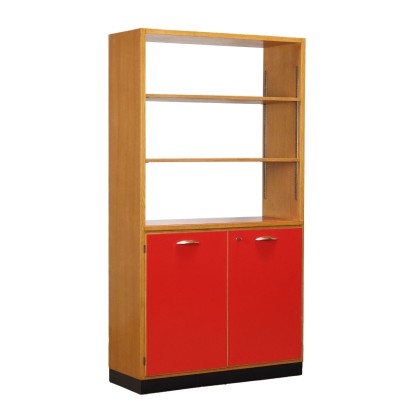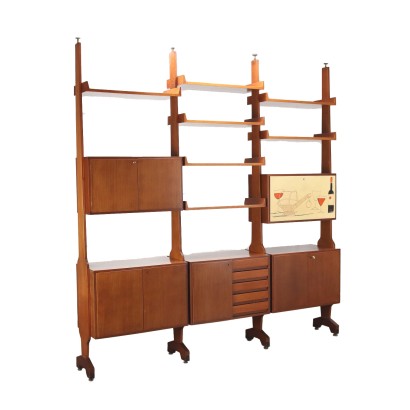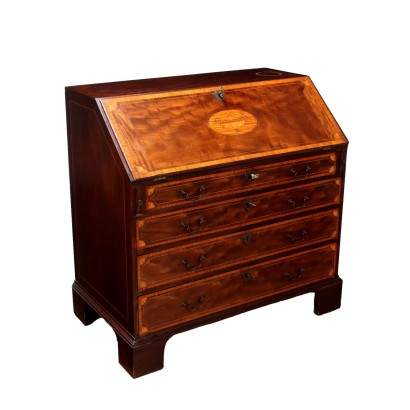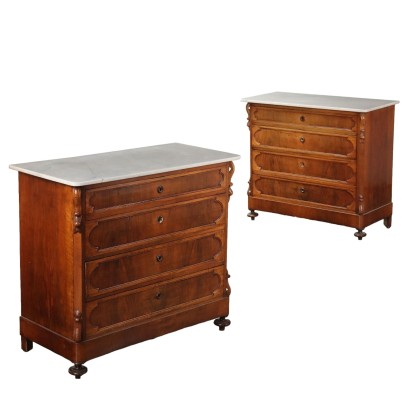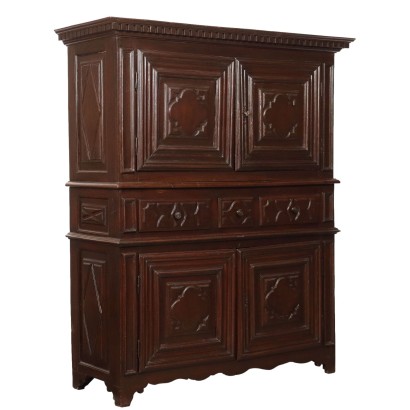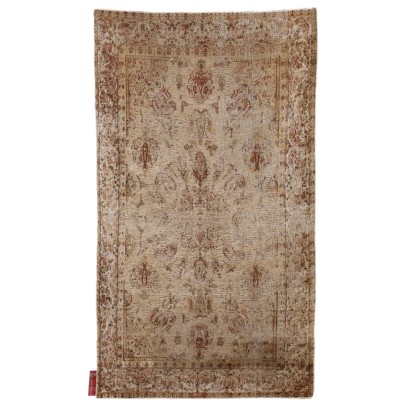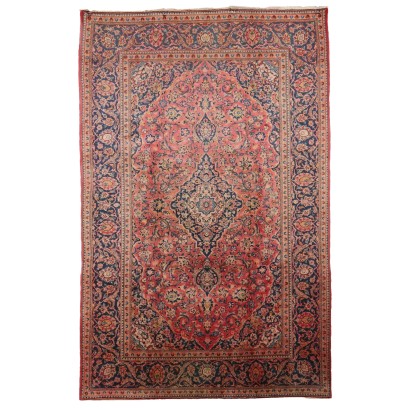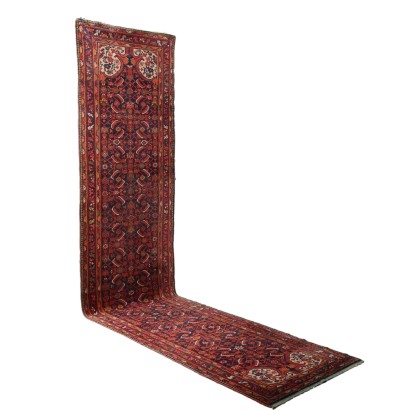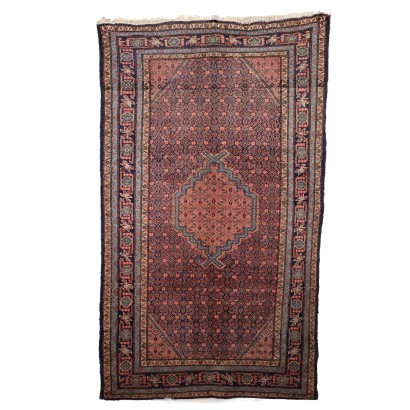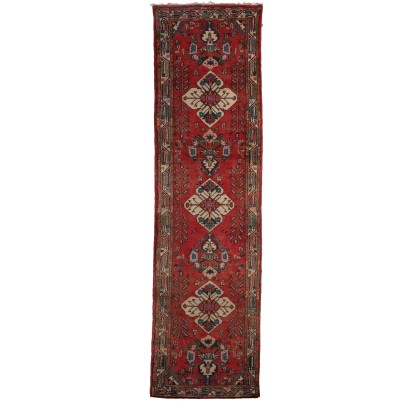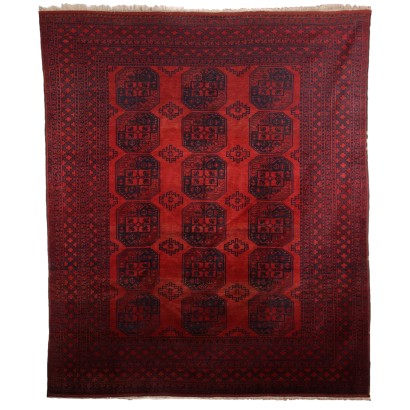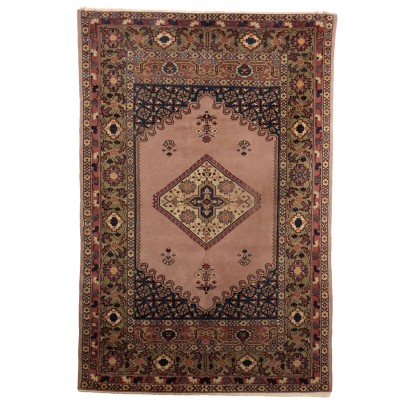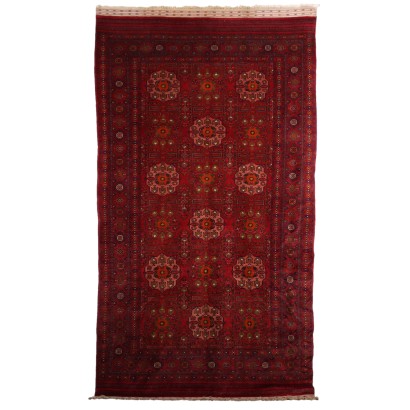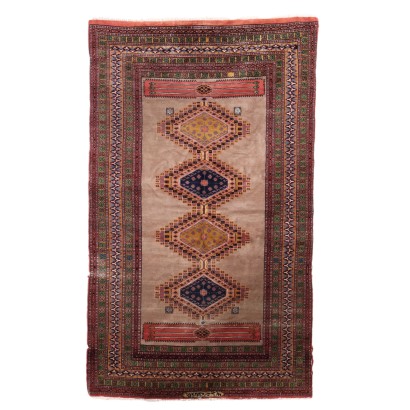Antique Umbertino Showcase Walnut Italy XIX Century - Italy, Late XIX Century
Features
Italy, Late XIX Century
Style: Umbertino (1870-1900)
Age: 19th Century / 1801 - 1900
Origin: Italy
Main essence: Silver Fir , Walnut
Description
Umbertino walnut bookcase, base with paneled doors, upper doors with verts. Fir shelves, ebonized feet. Missing spout. Italy, last quarter of the 19th century
Product Condition:
Product that due to age and wear requires restoration and polishing. We try to present the real condition of the furniture as completely as possible with the photos. If some details are not clear from the photos, what is reported in the description is valid.
Dimensions (cm):
Height: 278
Width: 139
Depth: 59
Maximum size (cm):
Height: 278
Width: 139
Depth: 59
Additional Information
Style: Umbertino (1870-1900)
The name of this style is due to the ruler of the time Umberto I appointed King of the Kingdom of Italy on January 9, 1878 and assassinated on July 9, 1900.The Umbertino style is typically Italian and belongs to that Eclectic period that characterized the second half of the 19th century, which lasted just under twenty years. The Umbertino style spread around 1880 and ended around 1895 when a new style called Liberty and universally known as Art-Nouveau took over, followed by Art-Decò.
In this style, predominantly eclectic and monumental, Gothic and Baroque elements originally belonging to the Renaissance but also adorned with large masks, frames and decorations were re-proposed in furniture, from the bedside table to the large wardrobe or sideboard.
Find out more about the Umbertino style with our insights:
An Umbertine secretaire dedicated to Dante Alighieri
A comparison between a Louis Philippe console and an Umbertina
INSERT ADDITIONAL LINKS:
The Austrian taste of Baroque
A guide to Art Nouveau
Discovering Art Deco
Age: 19th Century / 1801 - 1900
19th Century / 1801 - 1900Main essence:
Silver Fir
Soft coniferous wood, used for rustic furniture or to build the chest, that is the structure, of furniture then veneered in more precious woods. It has been used since ancient times, its most valuable use is, in the Spruce variant, in the inlays of French antique furniture of the '700 . The spruce, more typical of northern Europe, in Italy grows mainly in the Eastern Alps at altitudes above 1300 m. The noblest use of this essence was in the construction of violins, guitars and cellos: Stradivari himself produced his famous violins with this wood.Walnut
Walnut wood comes from the plant whose botanical name is juglans regia , probably originally from the East but very common in Europe. Light or dark brown in color, it is a hard wood with a beautiful grain, widely used in antique furniture. It was the main essence in Italy throughout the Renaissance and later had a good diffusion in Europe, especially in England, until the advent of mahogany. It was used for solid wood furniture and sometimes carvings and inlays, its only big limitation is that it suffers a lot from woodworm. In France it was widely used more than anything else in the provinces. In the second half of the eighteenth century its use decreased significantly because mahogany and other exotic woods were preferred.Other customers have searched:
Librerie, étagère, teca, vetrinetta, scansia, mobile, scaffale, libreria..
Consulta anche le migliori librerie e vetrine su FineArt:
Leggi di più
Libreria 'Life' Roberto Monsani per Acerbis
Libreria, Giuseppe Speluzzi, Milano, ultimo quarto XIX secolo
Libreria anni '50 manifattura italiana
Libreria anni '60
Sideboard '503' Gianfranco Frattini per Bernini
Mobile Mario Vender anni '60
Trumeau Queen Anne, Inghilterra, 1705 ca.
Sull'antiquariato in generale dai un'occhiata anche a:
Classic Monday: da un pezzo dei nostri magazzini alla storia dell'antiquariato
L'antiquariato dalla A alla Z: il Dizionario dell'Antiquariato
Il dizionario dell'antiquariato - Lastronatura
Il dizionario dell'antiquariato - Mascherone
Il dizionario dell'antiquariato - Natura morta
Il dizionario dell'antiquariato - Opificio
Il dizionario dell'antiquariato - Pastiglia
Il dizionario dell'antiquariato - Savonarola
Il dizionario dell'antiquariato - Rosone
Intaglio barocco con motivo a ricciolo
Leggi di più
Libreria 'Life' Roberto Monsani per AcerbisLibreria, Giuseppe Speluzzi, Milano, ultimo quarto XIX secolo
Libreria anni '50 manifattura italiana
Libreria anni '60
Sideboard '503' Gianfranco Frattini per Bernini
Mobile Mario Vender anni '60
Trumeau Queen Anne, Inghilterra, 1705 ca.
Sull'antiquariato in generale dai un'occhiata anche a:
Classic Monday: da un pezzo dei nostri magazzini alla storia dell'antiquariato
L'antiquariato dalla A alla Z: il Dizionario dell'Antiquariato
Il dizionario dell'antiquariato - Lastronatura
Il dizionario dell'antiquariato - Mascherone
Il dizionario dell'antiquariato - Natura morta
Il dizionario dell'antiquariato - Opificio
Il dizionario dell'antiquariato - Pastiglia
Il dizionario dell'antiquariato - Savonarola
Il dizionario dell'antiquariato - Rosone
Intaglio barocco con motivo a ricciolo
Alternative proposals
It could also interest you

